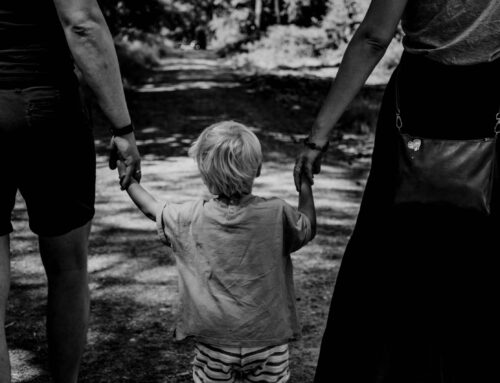Robert Emery, Ph.D. is an important resource for understanding the impact of divorce on children and families and offering practical guidance to help families re-organize and adjust well. I have found his book The Truth About Children and Divorce and his most recent book Two Homes One Childhood: A Parenting Plan to Last a Lifetime to be excellent resources for parents. They both offer parents research-informed guidance to remain child-focused and parent well post-divorce. Emery offers great summaries of child development and research outcomes related to child adjustment and the impact of various parenting plan options on children at different ages and stages.
Of particular interest is Emery’s use of a hierarchy of needs pyramid, made famous by psychologist Abraham Maslow in the 1940’s. Just as Maslow created a pyramid of the most basic needs (physiological and safety) at the base of the pyramid and self-actualization at the top of the pyramid; Emery creates a pyramid of the needs of children living in two homes. Emery also puts basic physiological health needs for food and shelter at the base of the pyramid, followed also by safety needs. Moving up the pyramid, Emery then suggests that children need at least one “good” parent. “Good” parenting is described as attentive, attuned, loving, consistent and firm; often described as “authoritative” parenting. Informed by research outcomes, Emery suggests children then need protection from conflict. Once these needs are met, then children benefit from two “good” parents. If all of these needs are met, then Emery suggests that a child is able to fully experience their childhood, free from threats and adult burdens. When this happens, a child is able to naturally develop and grow to his or her fullest potential.
What jumped off the page for me was the suggestion that protection from conflict is a more basic need for children than having two involved parents! Emery is not just forming this as his opinion, but rather posits this based upon research outcomes for children. The research is pretty compelling; parental conflict hurts kids. While that is not so surprising, seeing it juxtaposed in relative importance against one versus two parents is perhaps more sobering. The implication being that the added benefit for children of two involved parents is undermined if the parents are in high and/or ongoing conflict. Emery suggest that “…protection from conflict is a more basic need than having involved relationships with both parents” (Two Homes One Childhood, 2016, pg. 28). Of course, two involved, loving, “good” parents is optimal for children unless it puts children in the middle of a battle zone.
Of course, it would be a rather grim solution to remove a parent from a child’s life in order to meet a child’s need to be protected from conflict! It would be awful for a child to not have both parents actively in his or her life and it would be awful for a child to be in the middle of parents in conflict. Emery indicates that the best solution for children is for parents to “get it together.” Perhaps this hierarchy pyramid of needs is another vehicle to help parents realize that if they participate in any way in ongoing conflict with their co-parent, they are a problem for their child. What can parents do to be part of the solution in protecting their children from conflict rather than the problem? If we consult Emery’s pyramid, after ensuring the basic food, shelter, and safety needs, parents can:
- Be a “good” parent. Learn skills to be an effective, authoritative parent. This means offering plenty of love and firm, clear, consistent limits.
- Minimize and effectively manage conflict with your co-parent. Learn conflict and communication management skills and develop structures and boundaries to parent effectively separately and together.
- Be two “good” parents separately, together. Coordinate and cooperate as co-parents. Learn which issues require coming together and coordinating and which issues require respect of the right to parent separately. Create systems for sharing information and making decisions.
These efforts allow your child to climb up the pyramid of needs, fully experience their childhood to grow and develop freely. Isn’t that what most parents want for their children?





